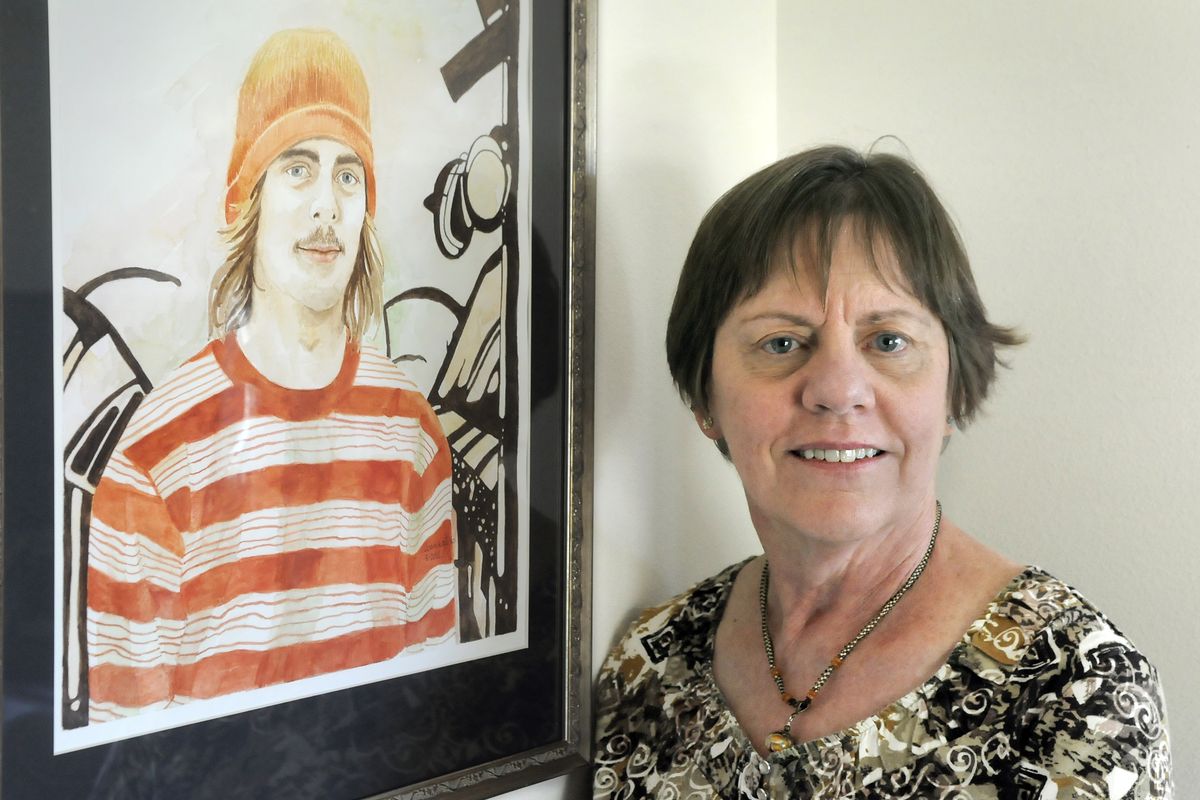Her art flourishes despite Parkinson’s
After retirement, Waters focuses on glass sculpture, watercolor

When Joan Waters retired from her job as a draftsperson at Avista Utilities in 2008, she wasn’t looking forward to retirement. It was her diagnosis with Parkinson’s disease, combined with other health issues related to a car wreck more than 30 years ago, that made it impossible for Waters to continue working 40 hours a week.
“I missed work terribly. It took me a full two years to adjust to retirement,” said Waters. Then she smiled. “Now I don’t mind so much anymore.”
Waters, 63, has always been an artist, drawing and making jewelry. About five years ago, while working on a jewelry piece with glass beads, she decided to learn how to make the intricate, multicolored beads she loved so much instead of buying them at the store. And that’s how she got into glass art. Her glass sculpture “Wren on Cactus” is featured in the Parkinson’s Disease Foundation 2012 Creativity and Parkinson’s calendar for the month of May.
“It was very nice that they picked some of my art,” said Waters, who also recently took up watercolor as a medium. The walls in her Indian Trail home are covered with her drawings and paintings, and a hutch holds some of her glass sculptures.
“It’s funny, the idea of practice never occurs to me until I start actually making something,” Waters said.
The glass beads produced by Waters are the size of marbles or smaller. They feature flowers, dots, spirals and other multicolored patterns. Making beads requires her to be very careful and coordinated while warming glass rods in a live flame, applying dots of color or winding glass around a metal rod to form the bead.
“You have to use two hands, both for the glass and for adjusting the torch,” Waters said. “I sometimes have a hard time adding the dots because my hands shake.”
Any trouble Waters may have during the process does not show in the final result. Her sculptures fit in the palm of a hand and have many intricate details. Motifs are often found in nature such as fish, birds and plants.
Where does she get most of her ideas?
“I don’t know,” said Waters, smiling. “It’s not like I plan it out. You just have to go in and keep at it.” Several layers of burning hot glass, the consistency of soft taffy, have to be manipulated and applied in just the right manner to complete a sculpture.
Some ideas come from her doll collection, which she created while growing up as a military brat.
“We lived in Japan and California and Maryland and Hawaii – all over the place,” said Waters.
She’s convinced glass art has helped her deal with the typical Parkinson’s symptoms such as trembling and a lack of coordination. Mostly, said Waters, doing glass art makes her happy, and that’s important when one is faced with a devastating diagnosis of any sort.
“What else would I do? Read a lot?” said Waters.
She encourages other people with Parkinson’s to try some kind of art, even those who may think they can’t do it.
“You can do it; everyone has art skills,” said Waters. “Just try it and you’ll find something you like.”